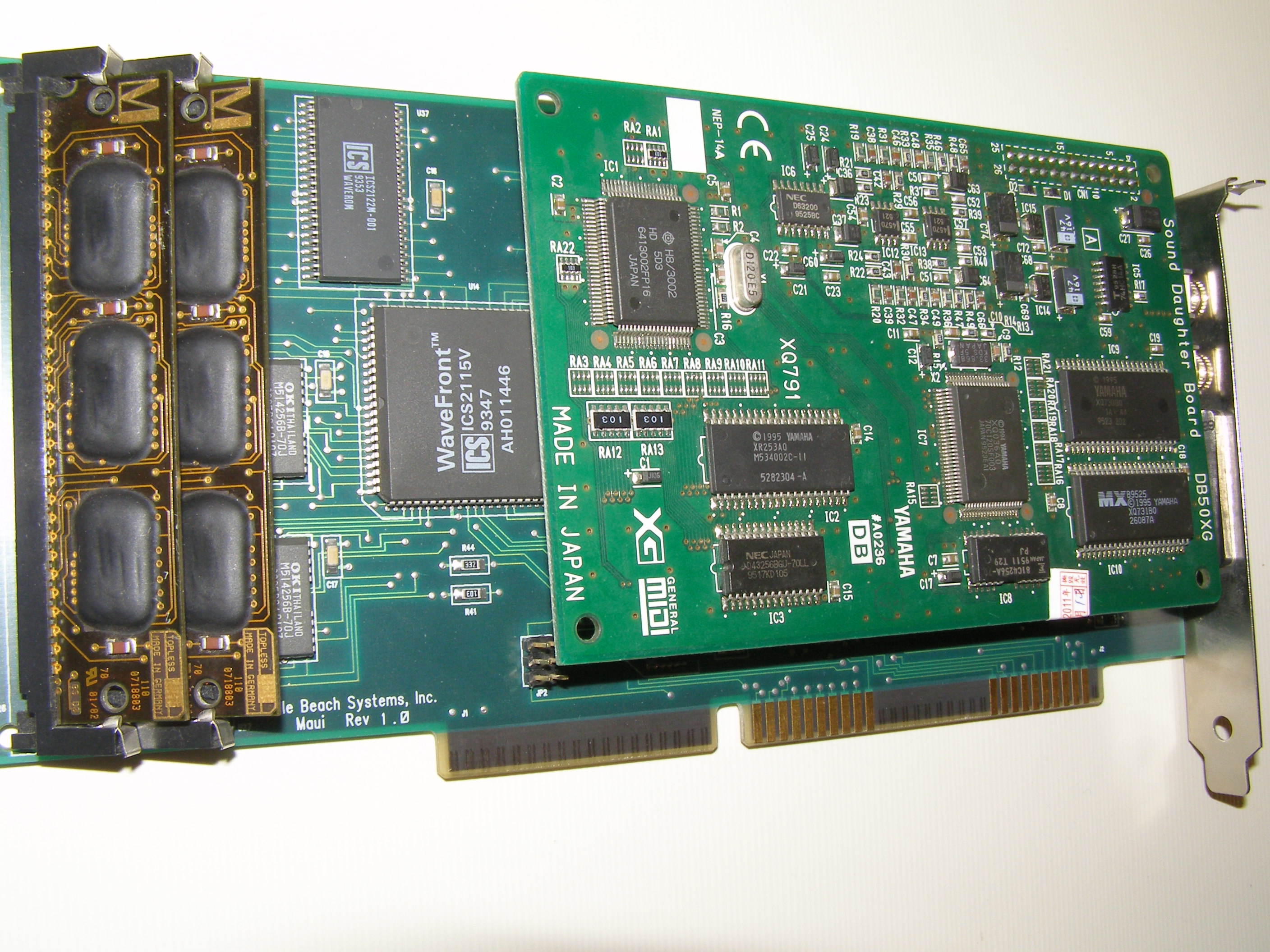Great card with great possibilities its "only " a midi card but there is a wemp96 player for mods in dos Wavefront Extended Module Player v0.96 by Daniel Baum .
The attachment maui.jpg is no longer available
In the manulal its says that you can connect this card to a sound card with the 26 pin ribbon cable to replace its synth
In games Its easier to have maui installed with other sound card and plug the maui sound out to a sound in or auxilliary of this other card and make changes in games setup for midi sounds .
You can find info in the internet that:
SECTION 2: Package Changes
--------------------------
2a) Changes to the Card
The first batch of Maui's had the WaveBlaster connector header,
however, subsequent Maui's did not have this connector. The explanation
from Turtle Beach was that Creative Labs changed the WaveBlaster
specifications at the last minute so the WaveBlaster connector was removed.
For those of you who want WaveBlaster daughtercards, look into Turtle
Beach's Rio card.
2b Changes to the Manual (v1.0)
Since the WaveBlaster header is no longer there, the references to
the WaveBlaster connector and "Internal Serial MIDI Interface" are fairly
obsolete. As far as I know, no one has tried to make their own patch cable
to use the WaveBlaster header circuitry on the Maui.
The JP2 Port settings on page 12 to set the Base Address Maui uses is
incorrect. The setting for port 230h is correct, but the setting for port 210h
should show all jumpers closed.

